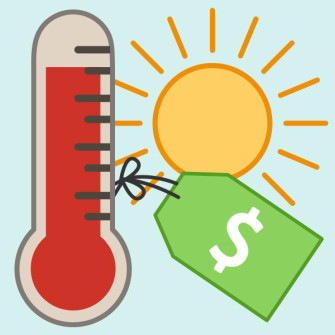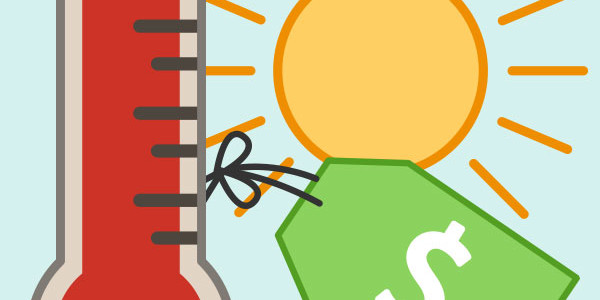Summer Energy Bills – 5 Tips to Save $$$
 As temperatures rise, it’s common for utility bills to do the same. A whole-house makeover isn’t necessary to begin generating energy savings this summer. Even the simplest changes can save you some serious dough in no time.
As temperatures rise, it’s common for utility bills to do the same. A whole-house makeover isn’t necessary to begin generating energy savings this summer. Even the simplest changes can save you some serious dough in no time.
Clean Filters
Want your air conditioner to run as efficiently and inexpensively as possible? Be sure to put “clean filters” at the top of your to-do list. Dirty filters significantly block airflow and reduce a system’s efficiency. With normal airflow obstructed, air that bypasses the filter may carry dirt directly into the evaporator coil and impair the coil’s heat-absorbing capacity. Clean your filter and you can lower your air conditioner’s energy consumption by up to 15 percent. For central air conditioners, filters are generally located along the return duct’s length. Room air conditioners have filters mounted in the grills that face into your house. Some filters are reusable; others must be replaced. Clean or replace your air-conditioning system’s filter or filters monthly during the cooling season. Filters may need more frequent attention if the air conditioner is subjected to dusty conditions or you have pets.
Insulate
Just as it keeps your house warm in the winter, insulation can help keep your home cool in the summer. Insulation can reduce heating and cooling costs as much as 20 percent. If you’re only going to insulate one place, look upward. Attic temperatures can soar to 140 degrees or higher in the summer. That heat will radiate down into your home. Insulation can stop that flow of heat and keep your main living space cooler in summer.
Shade Those Windows
Shades and blinds won’t actually reduce air leakage, but they can play a huge role in saving energy. Awnings, for example, can reduce solar heat gain in the summer by up to 65 percent on south-facing windows and 77 percent on west-facing windows. Awnings require ventilation to keep hot air from becoming trapped around the window. Consider installing adjustable or retractable awnings so that sun is allowed to warm the house in cooler months. Interior blinds can’t do much to control heat gain, but the fact that their slats can be adjusted helps control both light and ventilation. When completely closed on a sunny day, the U.S. Energy Department estimates highly reflective blinds can reduce heat gain by approximately 45 percent. Drapes or curtains may also reduce heat gain, but their effectiveness varies greatly depending upon their fabric type, color and backing. On hot days, close draperies on windows receiving direct sunlight to prevent heat gain. Studies demonstrate that medium-colored draperies with white-plastic backings can reduce heat gains by 33 percent.
Invest in a Smart Thermostat
Set your thermostat as high as comfortably possible in the summer. The smaller the difference between the indoor and outdoor temperatures, the lower your overall cooling bill will be. Programmable thermostats have the potential to save enormous amounts of energy. Unfortunately, most users don’t program their programmable thermostats, leading the government to exclude the devices from its Energy Star program.
Turn Off, Unplug
The U.S. EPA reports that the average household spends $100 a year on plugged-in devices even when they’re not being used directly. Nationwide, idle gadgets and appliances suck up 100 billion kilowatt-hours of electricity at a cost to consumers of about $11 billion. According to the EPA, computers account for 2 to 3 percent of overall U.S. household and office energy use. Sleep mode helps, but your best option is to unplug entirely or use a power strip.
Another big energy suck? That garage or basement fridge that’s being used to cool a half-empty ketchup bottle and a package of stale cheese. Pre-1993 models gobble twice as much energy as newer models. Need cold drinks for a party? Plug in the fridge the night before, but don’t keep it running unless you really need it.

